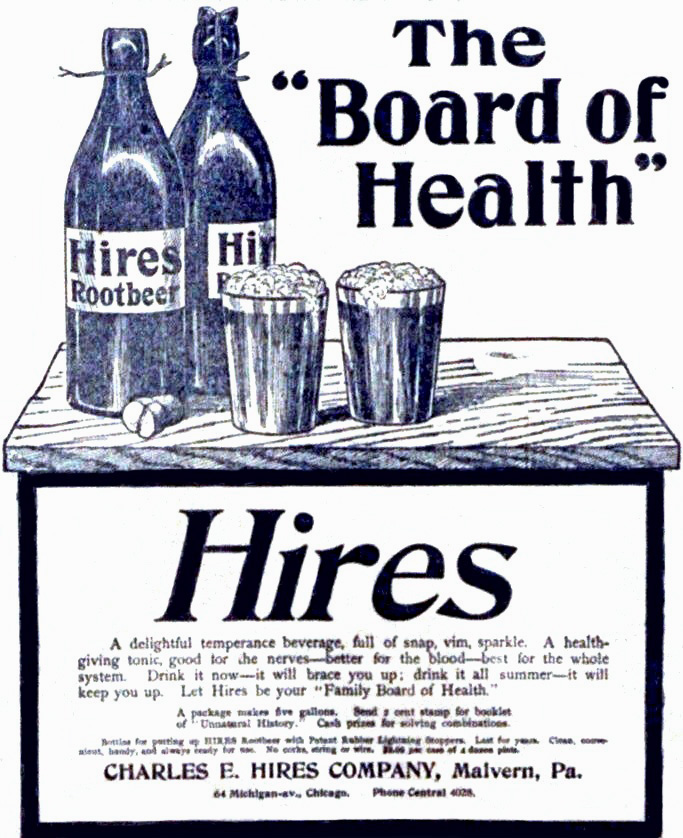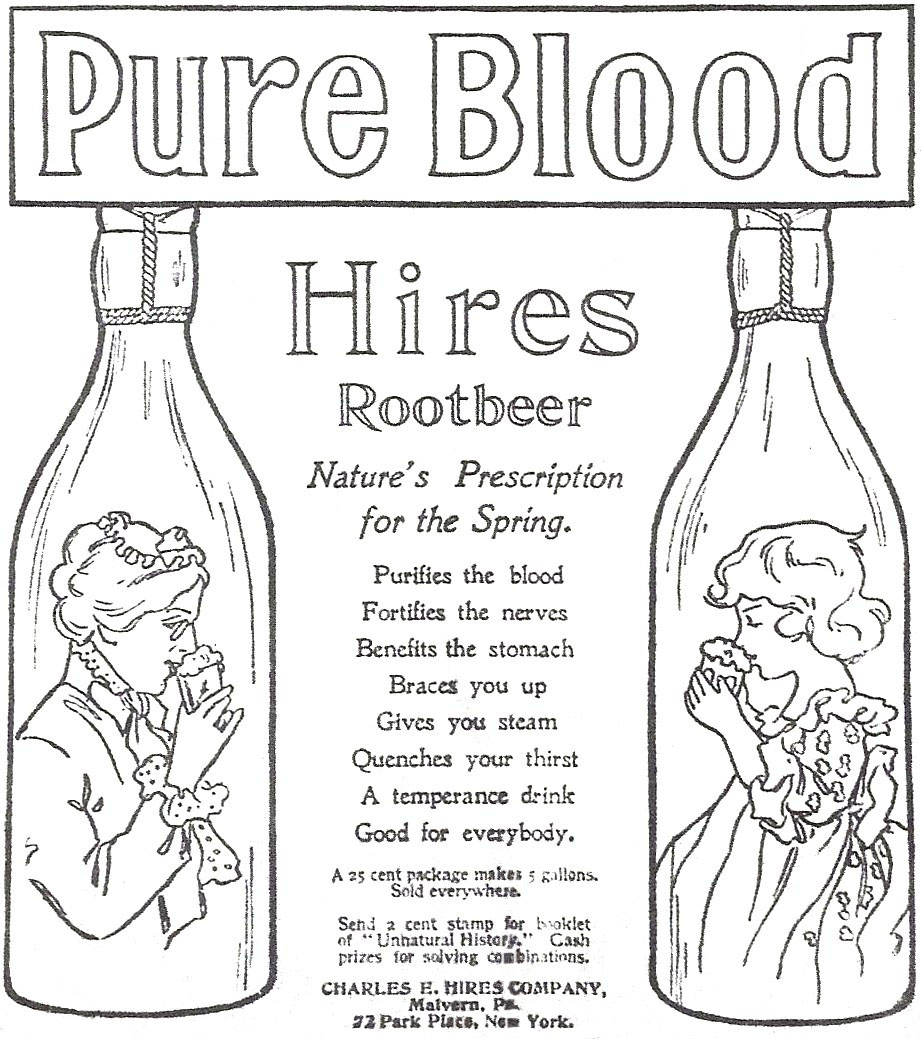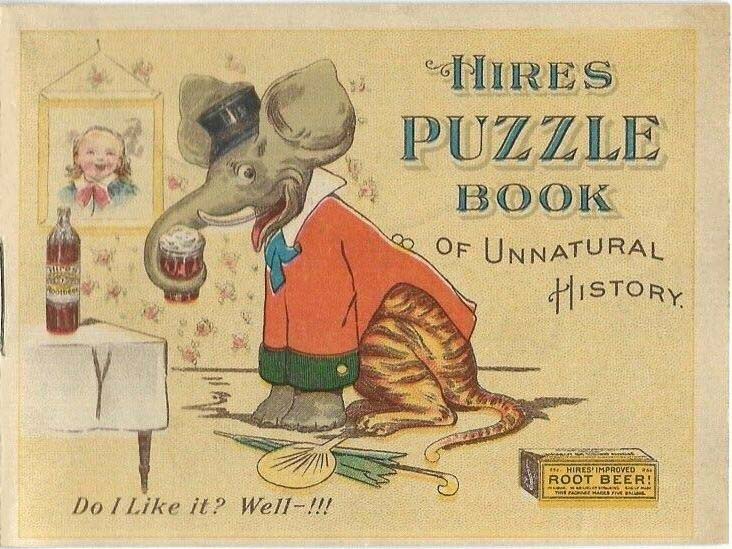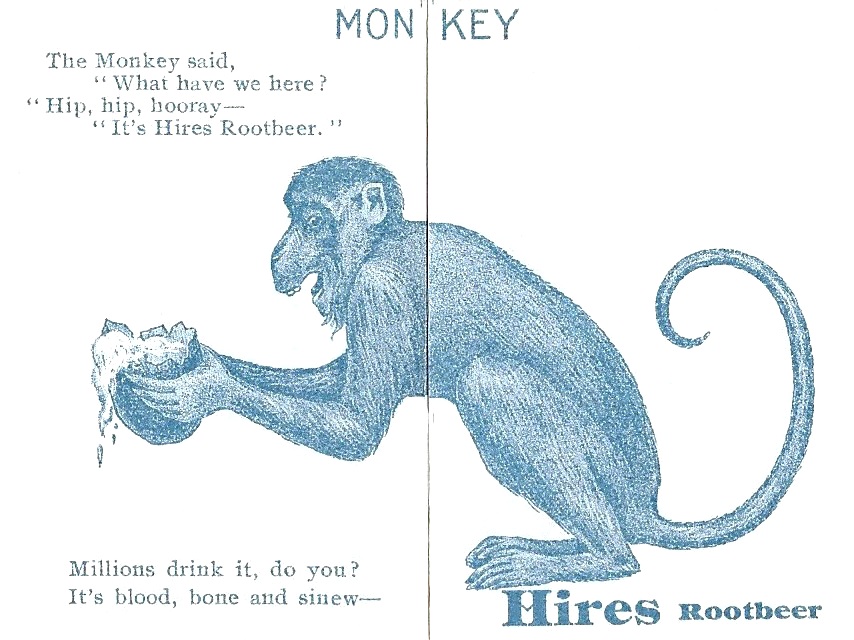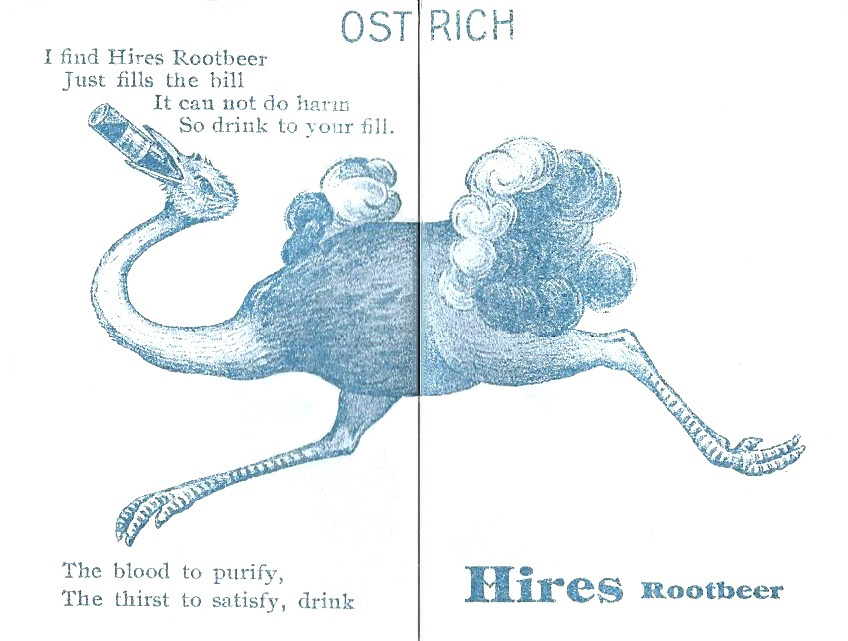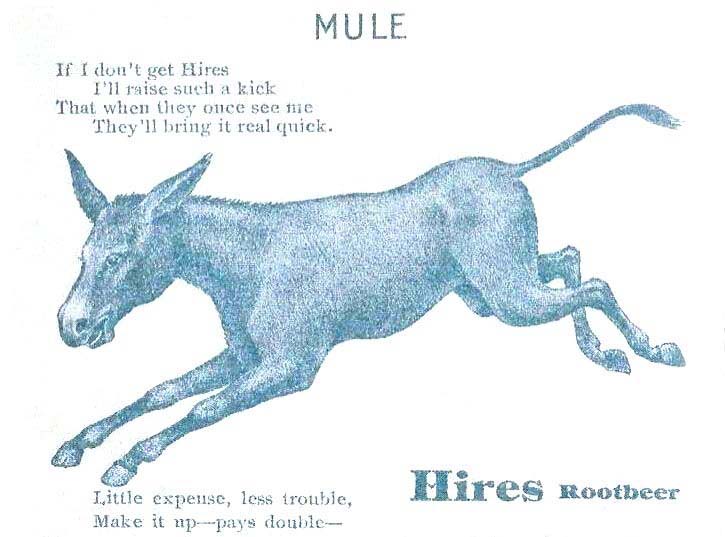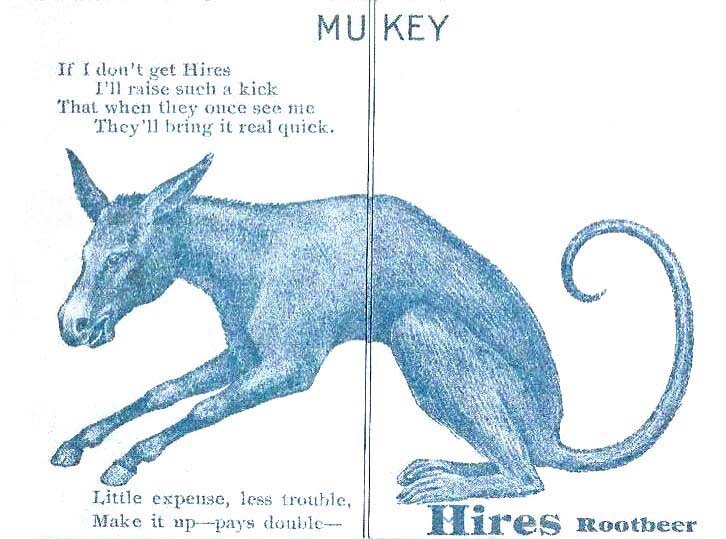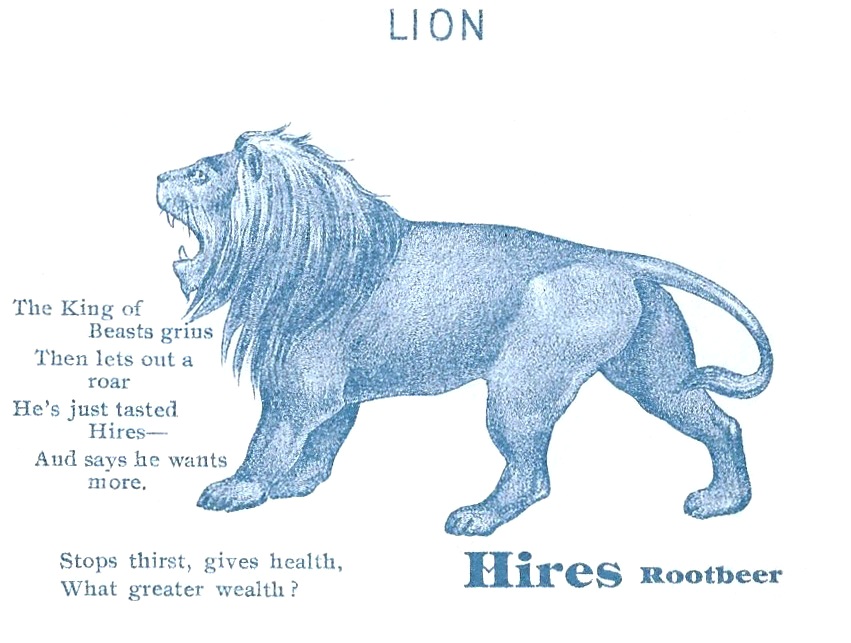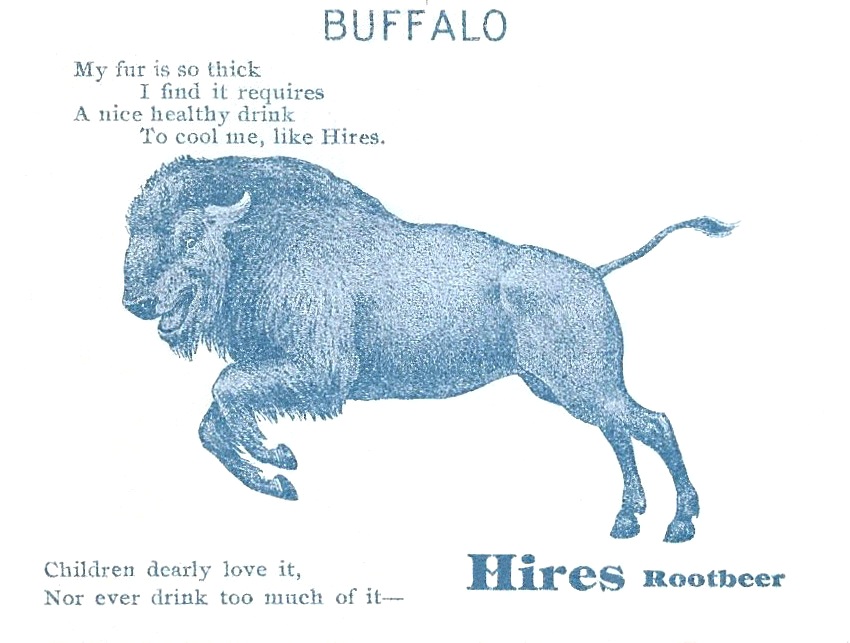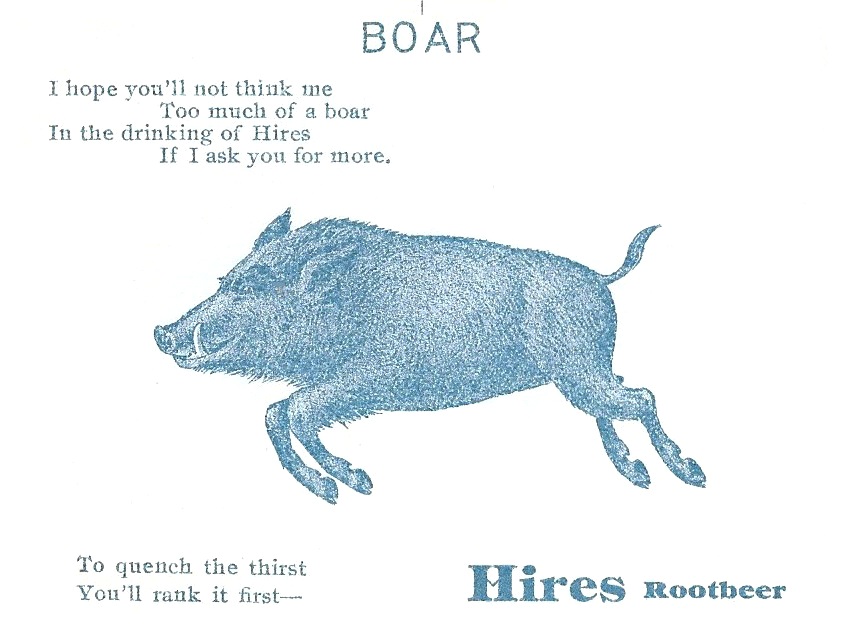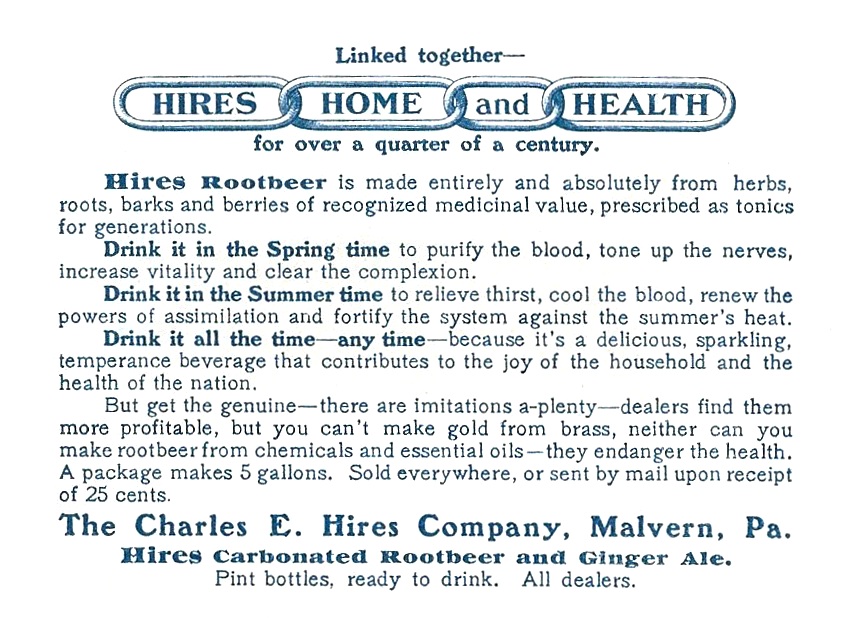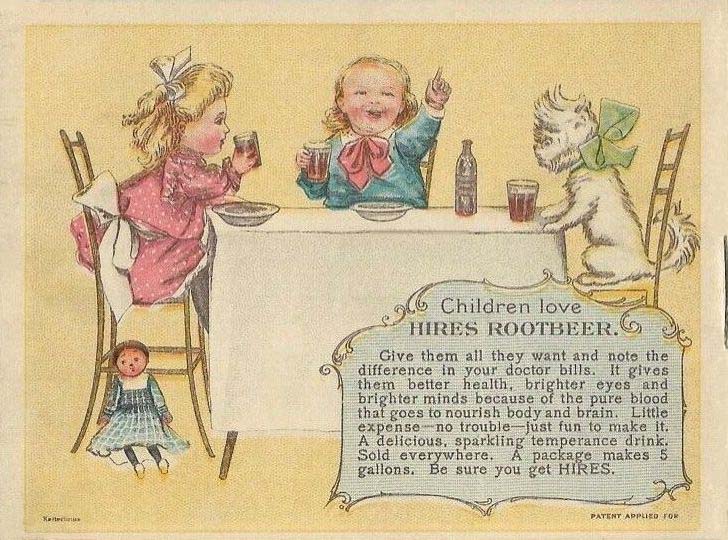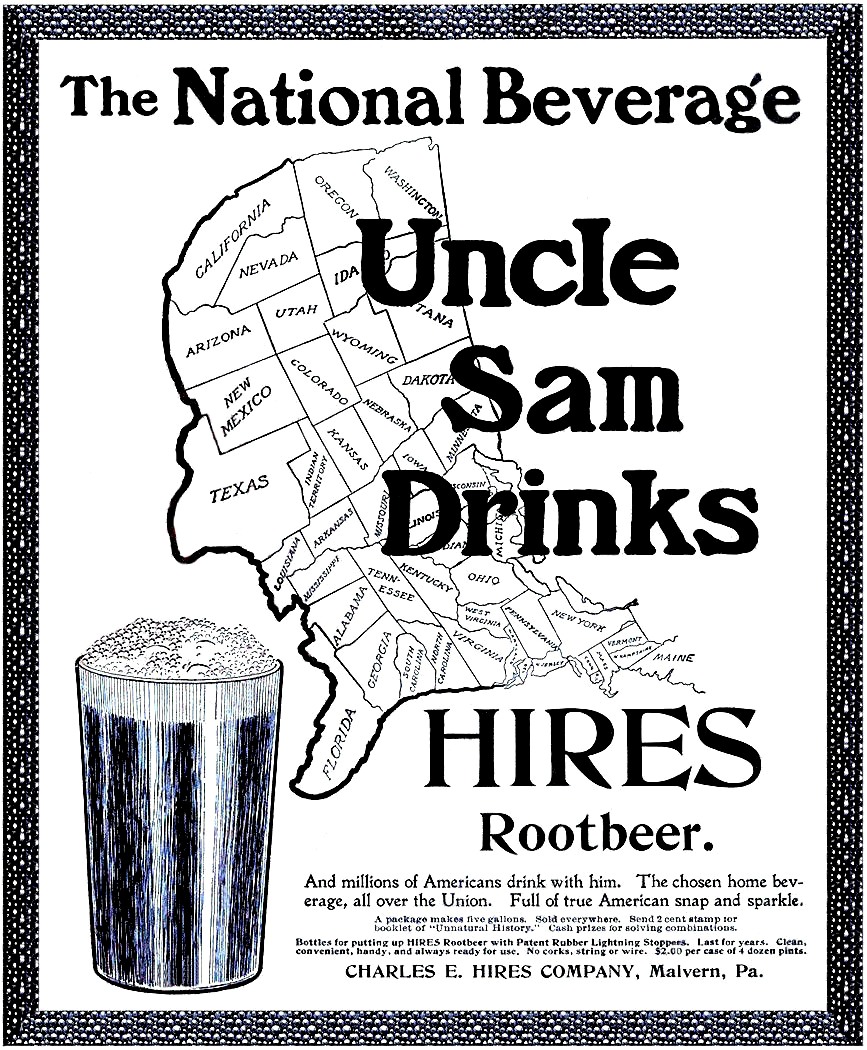1902
IT HAPPENED IN…1902
President Theodore Roosevelt set about breaking
up monopolies in an effort to lower consumer prices and lessen
restrictions on workers.
Interest in conservation of natural resources
grew, with President Roosevelt a strong advocate.
A United Mine Workers strike limited the supply
and doubled the market price of coal.
Congress authorized the financing and building of
a canal across the Isthmus of Panama.
The first Automat opened in Philadelphia.
Food visible behind glass was dispensed upon receipt of a
nickel. Employees
continually refilled the empty compartments.
The Texas Oil Company (Texaco) was founded.
Coca-Cola in bottles was featured in newspaper
advertising for the first time.
Newly introduced products included air
conditioners, flashlights, and teddy bears.
Hires continued to diversify its operations in 1902, as indicated in
The Story of Hires:
Water’s a good drink, too
In the early days, your company had trouble in getting pure water for the manufacture of Hires. Water purification methods had not yet been developed. So the Hires Company began to distill its own water. In 1902 it began to sell its excess capacity. Today, this “side line” has grown into the sizable “Purock” business.
These two very simple magazine advertisements were placed early in 1902.
(Figure 1901-01,
Scribner’s Magazine
Advertiser)
(Figure 1901-02,
Scribner’s Magazine
Advertiser)
(Figure 1902-03, magazine advertisement)
(Figure 1902-04, The Ladies’ Home Journal, June, 1902)
This advertisement promoting Hires Rootbeer as “A delightful temperance
beverage, full of snap, vim, sparkle” was placed in a Chicago newspaper
during the summer of 1902.
Readers were invited to “Send 2¢ stamp for booklet of ‘Unnatural
History.’ Cash prizes for
solving combinations.” Hires’
Chicago office at 64 Michigan Avenue could also be contacted via
telephone at Central 4028.
(Figure 1902-05, Chicago
newspaper advertisement)
This magazine advertisement pictures two blob top bottles with cork closures tied down with string. Like the preceding two illustrated advertisements, this example suggested readers “Send 2¢ stamp for booklet of ‘Unnatural History.’ Cash prizes for solving combinations.”
(Figure 1902-06, magazine
advertisement)
Here are the front and back covers and pages from the
4.25" x 3.25" Hires Puzzle Book of
Unnatural History referenced in many of Hires’ 1902 advertisements.
Elephant, monkey, ostrich, mule, lion, buffalo, camel, boar, tiger,
giraffe, kangaroo, and moose images were used
to target market to children, combined with a contest offering "Over
$100.00
(Figure
1902-07, Hires
Puzzle Book of Unnatural History, front cover)
(Figure
1902-07, Hires
Puzzle Book of Unnatural History, inside front cover)
(Figure
1902-07, Hires
Puzzle Book of Unnatural History, Elephant )
(Figure
1902-07, Hires
Puzzle Book of Unnatural History, Monkey)
(Figure
1902-07, Hires
Puzzle Book of Unnatural History, Monkey-Elephant)
(Figure
1902-07, Hires
Puzzle Book of Unnatural History, Ostrich)
(Figure
1902-07, Hires
Puzzle Book of Unnatural History, Mule)
(Figure
1902-07, Hires
Puzzle Book of Unnatural History, Mule-Monkey)
(Figure
1902-07, Hires
Puzzle Book of Unnatural History, Lion)
(Figure
1902-07, Hires
Puzzle Book of Unnatural History, Buffalo)
(Figure
1902-07, Hires
Puzzle Book of Unnatural History, Camel)
(Figure
1902-07, Hires
Puzzle Book of Unnatural History, Boar)
(Figure
1902-07, Hires
Puzzle Book of Unnatural History, Tiger)
(Figure
1902-07, Hires
Puzzle Book of Unnatural History, inside back
cover)
(Figure
1902-07, Hires
Puzzle Book of Unnatural History, back cover)
(Figure
1902-08, Woman’s
Home Companion and
The Ladies’ Home Journal,
July, 1902)
This clever newspaper advertisement features a United States map tilted so the Southern border resembles an outline of Uncle Sam’s face.
(Figure 1902-09, newspaper
advertisement)




